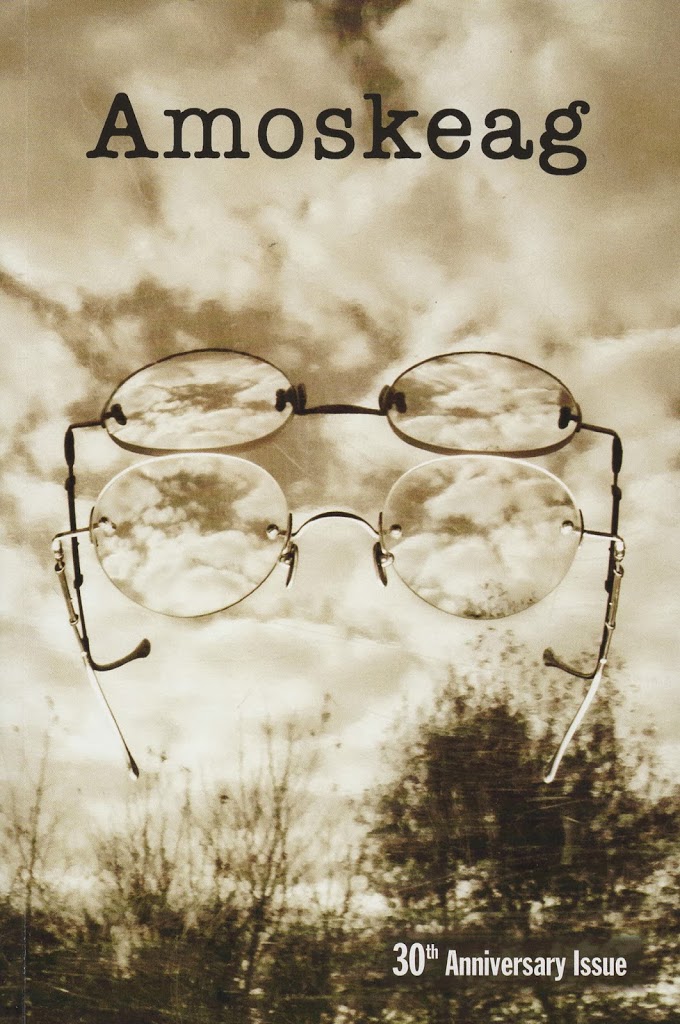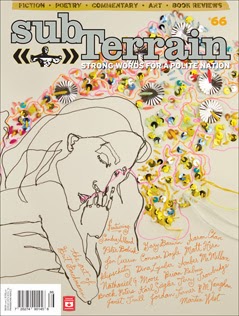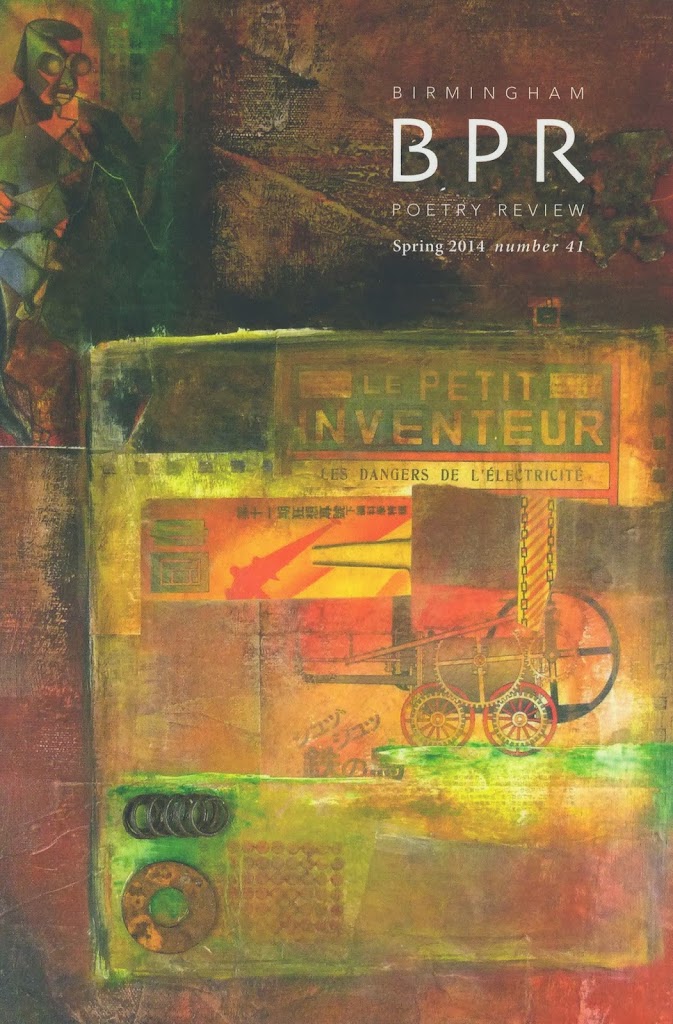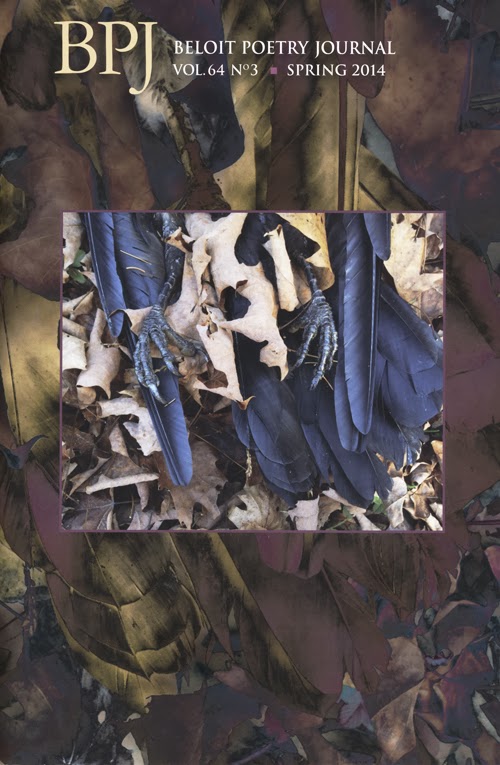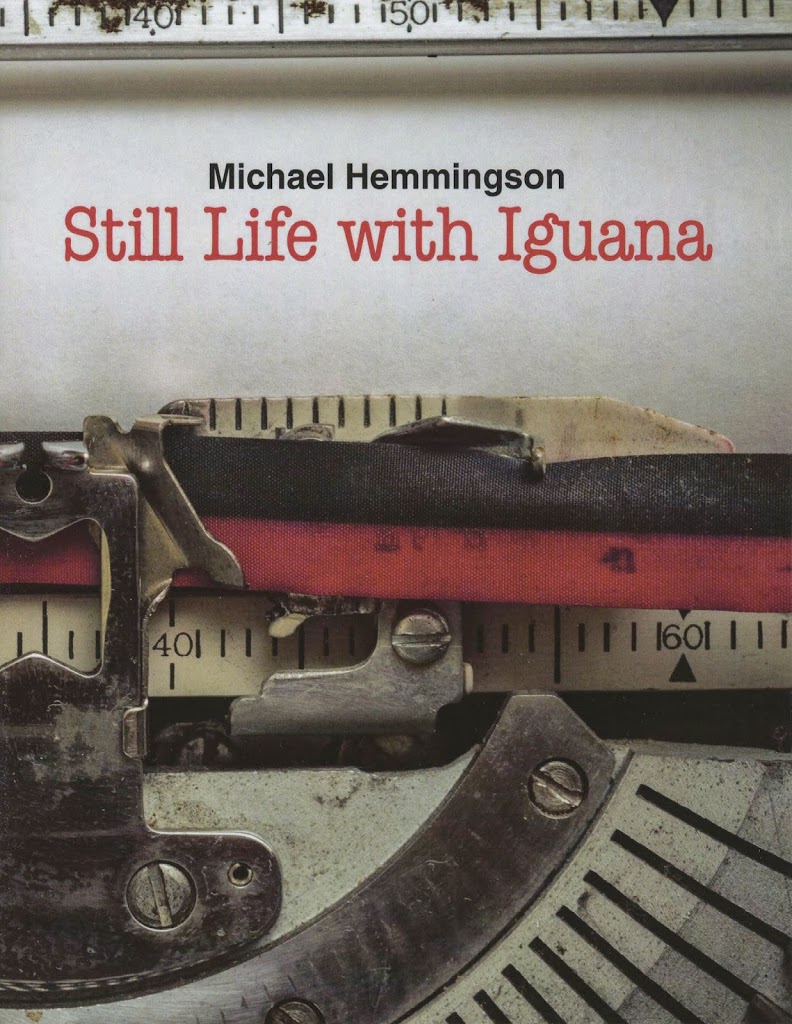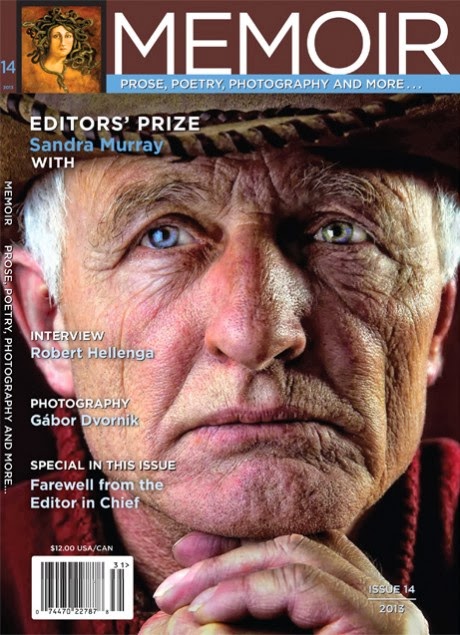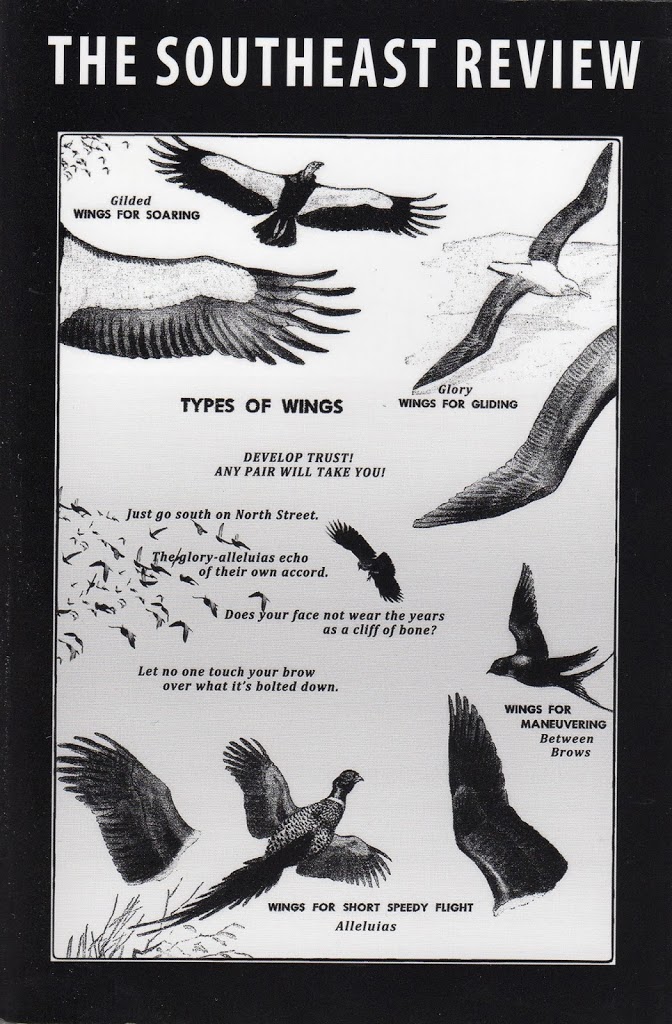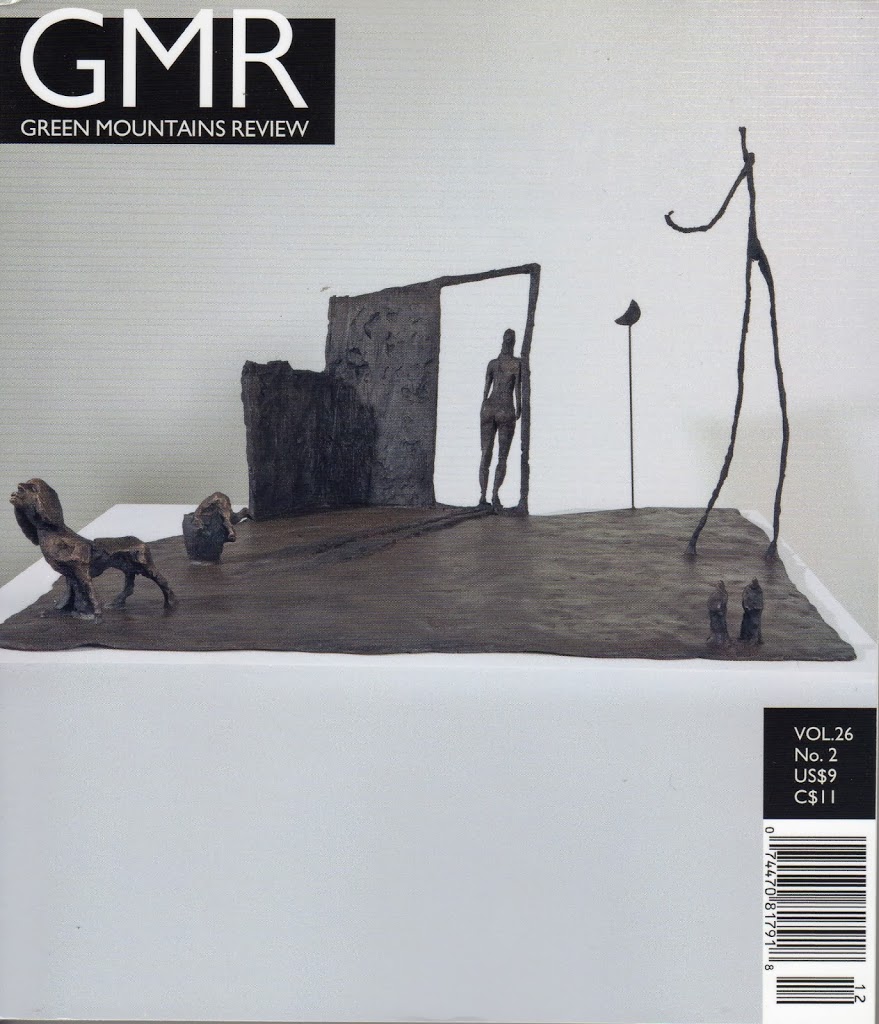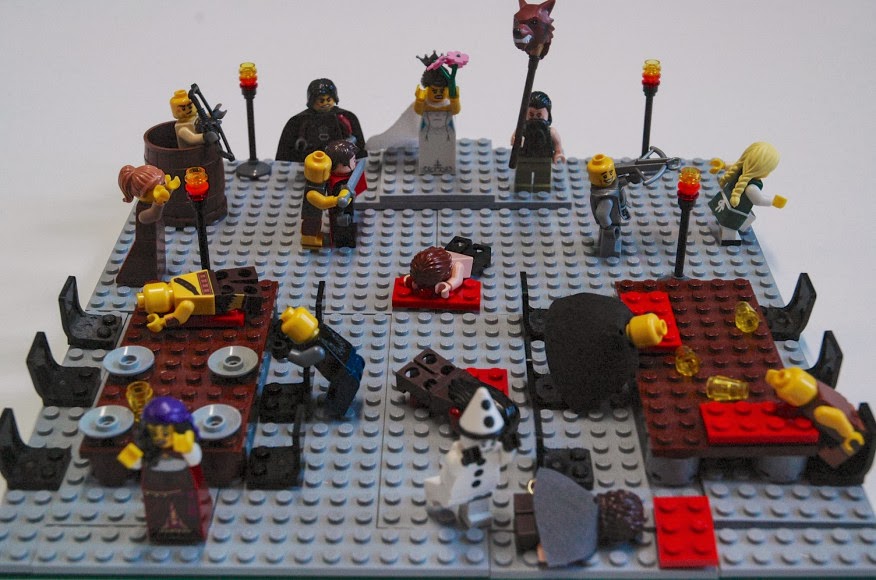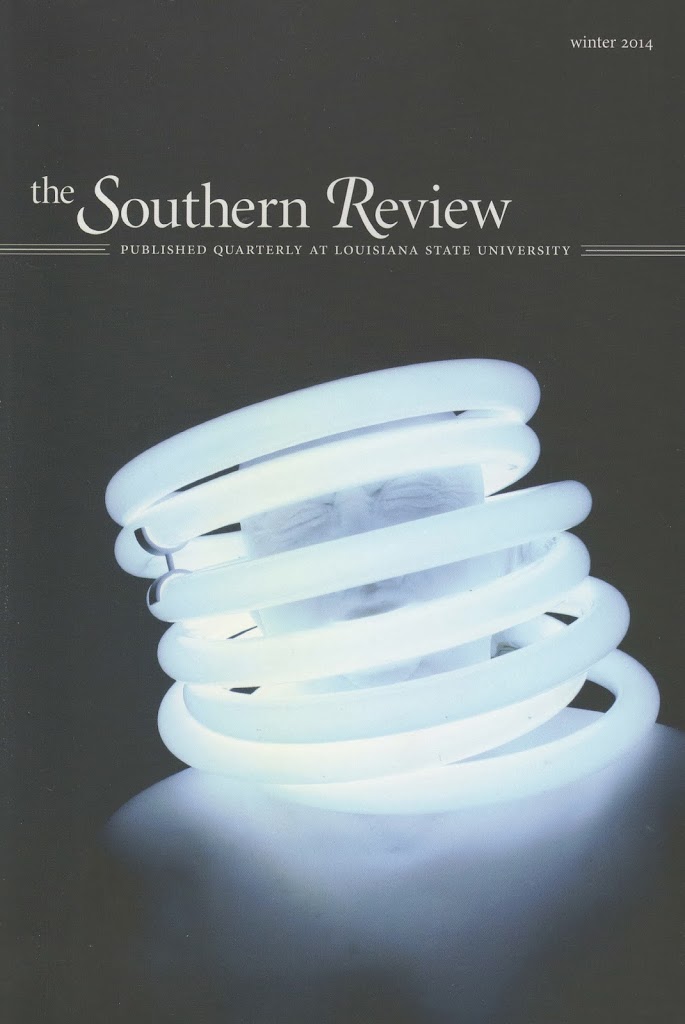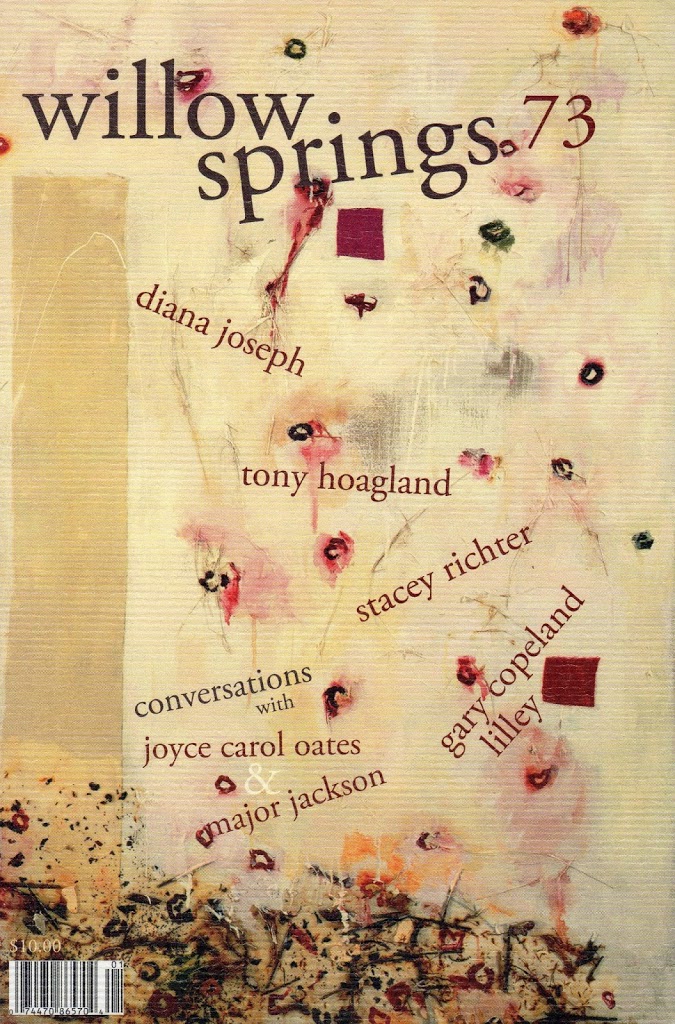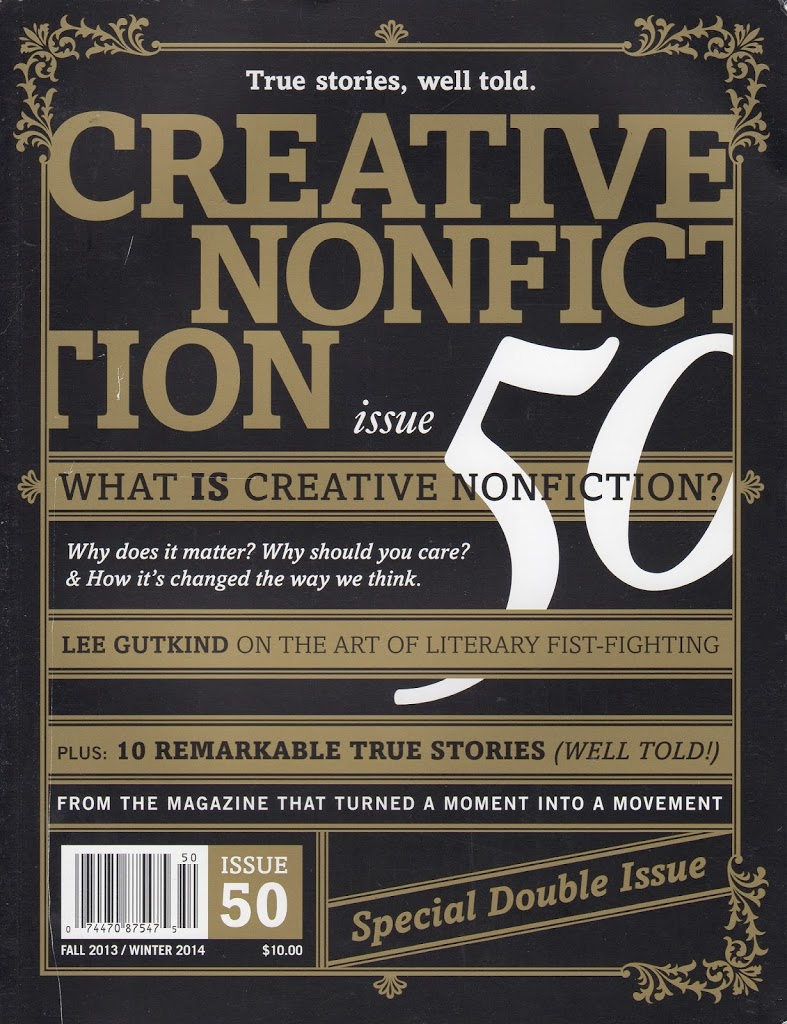Right Hand Pointing has recently changed their URL to righthandpointing.net. The old site (.com) does redirect, but it currently has a malware warning. To avoid this, please navigate to the new site. The editor, Dale, sent out a newsletter apologizing for the inconvenience and assuring that it will be fixed once there is time.
NewPages Blog
At the NewPages Blog readers and writers can catch up with their favorite literary and alternative magazines, independent and university presses, creative writing programs, and writing and literary events. Find new books, new issue announcements, contest winners, and so much more!
Right Hand Pointing “.net”
Spread the word!
30 Years for Amoskeag
Amoskeag has released their 30th anniversary issue. Editor Michael J. Brien writes that this issue “represents first time authors along with Puschart Prize nominees, presenting works of survival, nostalgia, hope, hurt, grief, and redemption…,” featuring work by Deborah Brown, Donna Pucciani, SNHU’s MFA Award in prose winner James Seals, the SNHU Undergraduate Prose Winner Amy Fontenot, the SNHU Undergrduate poetry winner Natalie Jones, the New Hampshire High School Poetry Winner Kelsey Jarvis, the New Hampshire High School Prose Winner Emily Bascom, and more.
Along with the issue came an announcement that the next issue, Issue 31 to be released in April, will be the last for Editor Brien. “The University has been blessed with the continuing of this national journal for over thirty years,” he says. “Each editor has contributed to Amoskeag‘s growth and expansion. This year we have had two of our authors, Ainey Greaney and John Debon, selected as Notables in The Best American Essays of 2013. It’s stuff like that that makes me as an editor hopeful in each submission that arrives at my desk.” Benjamin Nugent will be taking over with issue 32.
The press release states that “With the change of editor, the magazine will continue to produce noteworthy and thought-provoking poetry, fiction, nonfiction, photography, etc., but will also take new steps towards better serving the future creative writing majors of the SNHU community. The literary magazine greatly focuses on showcasing their work as well as the work of other aspiring and established regional, national and International writers.”
Spread the word!
Is David Sedaris Funny in Greek?
In World Literature Today‘s March 2014 issue, Myrsini Gana contributes an excellent article on the idea of translating humor, through her experience with translating David Sedaris’s work. “Humor is a big deal,” she writes. “It’s not a question of knowing the words; there’s a whole world behind it. Every country’s—and in consequence every language’s—take on humor reveals its deeper character, is idiosyncratic, and operates well within a “closed circle.” Seen like this, a whole country can be like a group of friends—they have their own codes, their own jokes—and outsiders are just that: they don’t get it.”
“I could fill pages with examples explaining in detail how every instance calls for a different line of thought and a different solution. I wish I could say that every solution I have chosen is the optimal one, but there is no universal rule to dictate a translator’s decisions. That’s why no two translators will ever come up with the exact same translation.”
Also included in this section is a brief interview with David Sedaris: “It’s one thing to translate a joke, and another to translate timing, which is hwere a lot of my laughs come from. It’s especially difficult when the sentence structure is so very different in German, for instance, when the verb comes at the end of the sentence. In my last collection, one of the laughs was based on the way people in Toronto say “about.” The joke didn’t make sense in German, so the translator focused on another word in the sentence—”kiosk”—and moved my Canadian to French-speaking Quebec. It was a brilliant save, but nothing could salvage the ending of another essay. The laugh is based on the phrases ‘your trash’ and ‘you’re trash,’ and I don’t imagine it will work in anything but English.”
Spread the word!
Lush Triumphant Literary Awards 2013
Subterrain’s Volume 7 Issue 66 features the winners of the Lush Triumphant Literary Awards Competition 2013.
Fiction Winner
Janet Trull: “Hot Town”
Poetry Winner
Connor Doyle: “Under City Suite”
Nonfiction Winner
Aaron Chan: “A Case of Jeff”
The rest of the issue includes fiction from Brock Peters, Martin West, Dina Lyuber, Gary Barwin, Sandra Alland, and Jordan Turner; poetry from Amber McMillan, Terry Trowbridge, klipschutz, and Jen Currin; and featured artist Brit Bachmann.
Spread the word!
Mary & the Giant Mechanism
One challenge with reading poetry that seems to be creating its own forms for what it is seeing and expressing is the tension between the urge to absorb the work as it is presented and an urge to search for clues—to go digging in, and perhaps between, the lines. On my first read through Mary Molinary’s Mary & the Giant Mechanism, I jotted little notes to myself and often thought, “hmmm . . .” On my second read-through, I mostly flipped through the pages at random, sometimes reading sections out of order, and thought “Ohh!” I think one of the successes of this poet’s first book of poetry is that it did compel me to go searching for larger “mechanisms” (to echo the title) that link the images and themes presented here. Continue reading “Mary & the Giant Mechanism”
Spread the word!
Shake Terribly the Earth
The word “Appalachia” can call to mind a host of stereotypes: poverty, fundamentalism, environmental exploitation, backwardness. Each word conjures up a vague image of a broad region that many have never visited. By contrast, specificity and personal experience come to the forefront in Sarah Beth Childers’s debut essay collection, Shake Terribly the Earth: Stories from an Appalachian Family. Here, in linked essays that consider family ties, faith, and history, Childers reveals her unique understanding of West Virginia as seen through her eyes and the eyes of her family. Through careful attention to the personal, these essays gently argue for the validity of each person’s understanding of their own world. Continue reading “Shake Terribly the Earth”
Spread the word!
Melville as Poet
Call me inspired. Most audiences come to know Herman Melville through Moby-Dick and Billy Budd, Sailor—deep, complex narratives that swell with metaphor and allegory. Both have entered the classical Americanist canon of literature thanks in large part to the early twentieth-century “Melville revival” within academia. Melville’s writing, however, extends well past the White Whale, and for the latter half of his literary career, his publication efforts and creative energy focused on his poetry. In recent decades, scholarly interest has turned to Melville’s canon of poetry as a window into American history and the understood role of a poet. (“[Melville’s] pained ironic view of his position as poetry weighed upon him.”) Melville as Poet: The Art of “Pulsed Life” (a bit of an odd title, but better than Melville: More than Moby) explores the breadth and depth of Melville’s poetry through its emphasis on the history, narrative, and imagery of a unique, careful, and lyrical American poet. Continue reading “Melville as Poet”
Spread the word!
Hope Tree
The front matter of Frank Montesonti’s Hope Tree asserts something interesting for an erasure formed from a how-to manual about pruning: “method / is unnecessary / to remove / the past season.” It is a fitting introduction to a book in which leniency and ruthlessness, and growth and death, are inexorably intertwined. Continue reading “Hope Tree”
Spread the word!
Mirages
Mirages: The Unexpurgated Diary of Anaïs Nin, 1939-1947 begins with Anaïs Nin and her husband, Hugo Guiler, escaping the war in Europe to relocate to New York City. On the first page, she is also concerned about whether her two lovers, Henry Miller and Gonzalo Moré, would come to New York with her. They did. Also on the first page, she writes: “I am still baffled by the mystery of how man has an independent life from woman, whereas I die when separated from my love.” Four hundred and forty pages and a dozen or more lovers later, she is still in the realm of needing love, experiencing loss, and longing for the one love that will make her whole. Her lovers are the content the narrative is hung upon, but not the most interesting. There is very little written outside her desire for love, finding love, being in love, leaving the lover, very little written about the art of the day or even about the city of New York or the world that was at war. The drama here is within the psyche of Anaïs Nin. Continue reading “Mirages”
Spread the word!
Collected Poems
Many readers associate Ron Padgett with the so-called second generation of the New York School of Poets. He did, after all, edit, with David Shapiro, the multi-generational spread An Anthology of New York Poets (1970), was at one time director of the Poetry Project at St. Mark’s Church in the Lower East Side, and has continued for decades to split his time living between homes in Vermont and Manhattan. He has also written intimate memoirs of, as well as edited works by, his friends, poet Ted Berrigan and artist Joe Brainard. And of course in the 1960s, the three collaborated on the infamously mischievous Bean Spasms, now a classic of collaboration from the era. Continue reading “Collected Poems”
Spread the word!
Let the Dark Flower Blossom
In Norah Labiner’s Let the Dark Flower Blossom, the character Roman Stone, a writer, says, “A story is a map to the underworld and how you follow that map is, of course, entirely up to you.” This story is cut into different patterns of back-story and forward motion, and point of view shifts from first person to third, character to character. Stone, a celebrity novelist, has been murdered. The news is shocking but not really a surprise to the lovers, enemies, and friends who have revolved around him, seemingly helpless to get out of his orbit. What the reader learns about Stone comes from the retrospective memory of the others. He appears to be the monster in the center of the labyrinth. Continue reading “Let the Dark Flower Blossom”
Spread the word!
Trances of the Blast
“What is the code for happiness?” Mary Ruefle asks in “Trances of the Blast,” a poem that comes midway through her book of the same title, but is as good a place as any to begin: Continue reading “Trances of the Blast”
Spread the word!
A Long Way from Verona
To read a Jane Gardam novel is to be sorry when it ends. In this country she is best known for her non-chronological Old Filth trilogy: Old Filth, The Man in the Wooden Hat, and Final Friends. But this early (originally published in 1971), seemingly autobiographical novel, A Long Way from Verona, has the same Dickensian, odd, well-defined characters. Her wit comes through as usual, in spite of the sometimes obscure British references. Continue reading “A Long Way from Verona”
Spread the word!
Rigger Death & Hoist Another
The best word to describe Laura McCullough’s newest book might be “fearless.” This may seem strange, as many of the poems deal with the horrors and threats of the world. These are not poems without fear, but poems that directly confront the speaker’s fears, and in so doing, they offer a way through. Continue reading “Rigger Death & Hoist Another”
Spread the word!
I Wasn’t Strong Like This When I Started Out
The Jewish Healthcare Foundation enlisted Lee Gutkind, the editor of Creative Nonfiction magazine, to choose these twenty-one essays in this new collection from the two hundred submissions sent in response to a call for manuscripts. Gutkind, who in the past two decades has written five books about the medical world, reveals in the introduction that he has a clear memory of the doctors and patients in his stories but not of the nurses, who remain semi-invisible to most of us, even though there are over 2.7 million of them working in the United States. The purpose of this book is to bring nurses out of the shadows and shine a light on the difficult work they do, as well as to educate readers about the demands of this challenging occupation. Continue reading “I Wasn’t Strong Like This When I Started Out”
Spread the word!
The Year of the Rooster
The Year of the Rooster, Noah Eli Gordon’s eighth book, examines a crisis of faith: a poet-narrator who questions his impulse to write and not write, the trappings or usefulness of theory and craft, and the very ability of poetry to signify. Gordon, an assistant professor at the University of Colorado at Boulder where he directs Subito Press, also founded chapbook publisher Letter Machine Editions with Joshua Marie Wilkinson in 2007; they both co-edit The Volta as well. Gordon is a writer fully immersed in a poet’s life, but his narrator questions the impact of such an immersion. Continue reading “The Year of the Rooster”
Spread the word!
The Artist’s Library
There are few surprises in The Artist’s Library: A Field Guide. Author-librarians Laura Damon-Moore and Erinn Batykefer do not have to convince bibliophiles that the library is hallowed ground. What they set out to do, and accomplish nicely, is offer ideas for becoming a more resourceful user regardless of intent. Continue reading “The Artist’s Library”
Spread the word!
The Do-It-Yourself Guide to Fighting the Big Motherfuckin’ Sad
Normally, I’m not one to gravitate to self-help or how-to books, but something about Adam Gnade’s 2013 chapbook drew me in. Maybe it was the cold winter months looming over my shoulder or, probably more likely, it was the blunt, unignorable title spread across the cover that led me to Gnade’s Do-it-Yourself Guide to Fighting the Big Motherfuckin’ Sad. Continue reading “The Do-It-Yourself Guide to Fighting the Big Motherfuckin’ Sad”
Spread the word!
Lit Mag Covers :: Picks of the Week
I’m loving the brilliant colors of Birmingham Poetry Review‘s Spring 2014 cover: The Alchemy of Invention, 2013 by Nicola Mason, mixed-media on canvas.
———————————–
Simon says press red. Simon says press blue. Simon says admire the cover of The Literary Review. A fitting cover image for the themed issue “Artificial Intelligence.” And in case you’re wondering what the inscription is underneath, it says, “Nothing that matters is new or fake. Nothing can’t be controlled with a joystick. Buttons are original thought. Peripherals are unpredictable. Synapses are mythic, like the words we live by.”
———————————–
Initial thought as I looked at this, out loud, “Ooo I really love this cover of BPJ.” A minute later upon closer look, “Oh gross, it’s actually kind of creepy, I thought it was just feathers.” Thirty seconds later: “I still really love it.” Beloit Poetry Journal takes an interesting approach for the cover of the Spring issue: a dead bird’s feet among crunchy, dead leaves. The photograph is titled “Raven Elegy” and is actually by Editor Lee Sharkey. Hauntingly beautiful.
Spread the word!
Curated Short Stories Recommended by Today’s Hottest Authors
Connu is the newest app to start reading short stories from great new writers. The app publishes these stories recommended by well-known authors including Lydia Davis, David Sedaris, Ron Carlson, and Joyce Carol Oates. It is also available online. All of it is free. Read the week’s selections, listen to their words, select your favorites, or pick something to read based on how much time you have at the moment.
To view the website, click here. Or if you’d like to download the app, click here.
Spread the word!
Still Life with Iguana
Iron Horse Literary Review‘s latest review features only one writer: Michael Hemmingson, winner of the 2013 IHLR Single-Author Competition. His novella, Still Life with Iguana, “flies through a journalist’s life and career, uncovering the heart of an appealing protagonist and reuniting him with his one true love,” writes Bill Roorbach. It “is told in fragments and blocks and tesserae, a mosaic beautifully rendered.”
Spread the word!
Emerson Society Awards 2014
The Emerson Society announces three awards for projects that foster appreciation for Emerson.
Research Grant
Provides up to $500 to support scholarly work on Emerson. Preference given to junior scholars and graduate students. Submit a confidential letter of recommendation, 1-2-page project proposal, including a description of expenses, by April 1, 2014.
Pedagogy or Community Project Award
Provides up to $500 to support projects designed to bring Emerson to a non-academic audience. Submit a confidential letter of recommendation, 1-2-page project proposal, including a description of expenses, by April 1, 2014.
Subvention Award
Provides up to $500 to support costs attending the publication of a scholarly book or article on Emerson and his circle. Submit a confidential letter of recommendation, 1-2-page proposal, including an abstract of the forthcoming work and a description of publication expenses, by April 1, 2014.
Send Research, Pedagogy/Community, and Subvention proposals to:
Noelle Baker (noelle.baker@me.com) and Kristin Boudreau (kboudreau@WPI.EDU)
Award recipients must become members of the Society; membership applications are available at http://www.emersonsociety.org
Spread the word!
Multimedia Endeavor through Lumina
Lumina Journal has put forth a special multimedia publication titled Lux. When you receive a copy, you’ll need to download the free app (or any other QR code reading app) to your phone or other mobile device. Then, each page of the book features writing with a QR code; scan it to discover videos, recordings, photographs, and interactive material. Artwork can also be scanned.
“We’re especially excited that we’ll be sharing a radio piece by Rick Moody—and giving you its fantastic prose in print, too, and poetry from Bianca Stone and Ken Cormier that live in the realm of YouTube as much as on the realm of the page.” – Carolyn Silveira, Multimedia Editor
Read more about it and watch a video here.
Spread the word!
Memoir Says Goodbye
With the publication of issue 14, Memoir has decided to say goodbye to its years of readers and writers. “Despite the fact that Memoir has continued to grow, that we gain more readers each month and attract scintillating submissions from well known writers as well as new and emerging writers, we will be turning out the lights and locking the office door,” writes Editor Claudia Sternbach . “Our primary source of funding has ended. But we are forever indebted to them for their generosity over these past few years. Not only were we able to publish 14 issues of Memoir, but we were able to offer workshops and publication through our (In)Visible Memoir project. And who knows, miracles do happen. Sometime in the future a Phoenix may rise from these ashes.”
From what I can see, issues are not archived online, and you cannot purchase the issues. However, there is an email address for business inquiries on their new site.
Spread the word!
The Southeast Review 2013 Contests
The Winter/Spring 2014 issue of The Southeast Review features the winners of the magazine’s 2013 contests:
World’s Best Short-Short Story Contest
judged by Robert Olen Butler
Winner:
Kat Gonso, “A Pinch of Salt”
Finalists:
Shannon Beamon, “The Skeletons That Make Your Closet”
Kelsie Hahn, “What My Daughter Is Holding”
Alisha Karabinus, “Begin Again With Heat”
Julia LoFaso, “The Envoy”
Heather Michaels, “These External Manners of Lament”
Eliot Wilson, “Costco”, “The Homeowners Association”, “Match.Com: A Lovesong in Two Voices”, and “Uncle Frank Meets Charlton Heston”
SER Poetry Contest
judged by Erin Belieu
Winner:
Elizabyth Hiscox, “Night Being the Consort of Chaos In Milton”
Honorable Mentions Selected by Erin Belieu:
Colette Gill, “Thoughts in a Russian Museum”
Elizabyth Hiscox, “Or What You Will”
Finalists Selected by the Editors of SER:
Rachel Contreni Flynn, “Gratitudes: Detasseling”
Jonathan Greenhause, “All Is Noise & Music”
Elizabyth Hiscox, “Cellular Physic”
Allan Peterson, “Lasting”
Christine Salvatore, “Betrayal”
Vivian Shipley, “No Gold Lamé for Me”
Kathryn Weld, “Seed Bed”
SER Narrative Nonfiction Contest
judged by Diane Roberts
Winner:
Pamela Balluck, “Parts of a Chair”
Finalists:
Elizabeth McConaghy, “Little Gods”
Sam Shaber, “I Am 40”
Spread the word!
Stan Lee for a New Generation
Stan Lee’s newest creative literary venture has unveiled a line of graphic novels, picture books, digital books and games for kids: Stan Lee’s Kids Universe. His characters include The Fuzz Posse police dogs and Reggie the Veggie Crocodile who becomes an outcast for forsaking his carnivorous family heritage. Yes, for kids, but I’ve got my eye on Monsters vs. Kittens, which explores the similarities and difference between the two. The books are available in hard and soft cover as well as for download on iBook and Kinds. Time to hook a new generation on Stan Lee!
Spread the word!
Don’t Go to the Dictionary: Vocabulary Play
When I turned to Peter Sipe’s Some Material May Not Be Suitable for Children in this month’s Glimmer Train Bulletin, I appreciated his awareness of the fact that not all young readers “enjoy” reading: “The best way to become a good reader is to read, but if you have trouble understanding the words, reading for pleasure may make as much sense to you as recreational dentistry.”
But the last thing I expected this 6th grade teacher to then advise me was not to tell students to use a dictionary when they encounter words in reading they do not know: “‘You go to war with the army you have,’ Donald Rumsfeld once told his troops. Children open books with the vocabularies they have. They can strengthen them on their own—just as in Iraq soldiers scavenged for armor to protect their vehicles—or we can help them get the vocabularies they need.”
He doesn’t shun the use of the dictionary, but his sense of instilling vocabulary power through play is one that can make the difference for struggling readers.
Spread the word!
Glimmer Train December Fiction Open Winners :: 2014
Glimmer Train has just chosen the winning stories for their December Fiction Open competition. This competition is held twice a year. Stories generally range from 2000-6000 words, though up to 20,000 is fine. The next Fiction Open will take place in June. Glimmer Train’s monthly submission calendar may be viewed here.
First place: Courtney Sender, of Baltimore, MD, wins $2500 for “Even Angels Are Astonished.” Her story will be published in Issue 93 of Glimmer Train Stories. This will be her first major print publication. [Photo credit: Summer Greer.]
Second place: Celeste Ng, of Cambridge, MA, wins $1000 for “Every Little Thing.”
Third place: Andrew Robinson, of Singapore, wins $600 for “Greater Love.”
A PDF of the Top 25 winners can be found here.
Deadline soon approaching! Short Story Award for New Writers: February 28. This competition is held quarterly and is open to all writers whose fiction has not appeared in a print publication with a circulation over 5000. No theme restrictions. Most submissions to this category run 1500-5000 words, but can go up to 12,000. First place prize is $1500. Second/third: $500/$300. Click here for complete guidelines.
Spread the word!
New England Review Double Issue
Stephen Donadio, editor of New England Review, says in the editor’s note that this special 2014 double issue will be his last as editor. Beginning with the next issue, the editor will be Carolyn Kuebler. Donadio says that some may wonder how his last issue came to be a double issue with a special section titled “The Russian Presence.” The section, “centered on recurring themes and patterns in Russian history and culture, contains an exceptionally wide range of writings, many of which appear here in English for the first time. . . Representing the work of more than twenty different authors, the selections gathered here span nearly two hundred years, from poetry by Alexander Puskin (1799-1837) to an excerpt from a contemporary novel by journalist and fiction writer Oleg Kashin (born in 1980). . .”
Spread the word!
Green Mountains Review Contest Winners
The Green Mountains Review Fall/Winter issue is in, featuring the winners from the Brattleboro Literary Festival Flash Fiction Contest and the Neil Shepard Prize.
Neil Shephard Prize Winners 2013
Poetry
Doug Ramspeck: “Sacred Music”
Fiction
Erin Somers: “The Melt”
Brattleboro Literary Festival Flash Fiction Contest Winners
Winner
Kathryn Nuernberger
2nd Place Winner
Karen Stefano
3rd Place Winner
Dorothy Bendel
Spread the word!
Literature in Legos
In celebration of the Lego Movie, Lego has taken to recreating famous scenes from literature in (of course) Legos! They are also having a competition and accepting entries from Lego fans. You can see some of their fan “favorites” so far here. [Pictured: The Red Wedding, from A Storm of Swords (A Song of Ice and Fire book 3) by George R.R. Martin]
Spread the word!
American Life in Poetry :: Jonathan Greene
American Life in Poetry: Column 464
BY TED KOOSER, U.S. POET LAUREATE
We human beings think we’re pretty special when compared to the “lower” forms of life, but now and then nature puts us in our place. Here’s an untitled short poem by Jonathan Greene, who lives in the outer Bluegrass region of Kentucky.
Untitled
Honored when
the butterfly lights
on my shoulder.
Next stop:
a rotting log.
American Life in Poetry is made possible by The Poetry Foundation (www.poetryfoundation.org), publisher of Poetry magazine. It is also supported by the Department of English at the University of Nebraska-Lincoln. Poem copyright ©2001 by Jonathan Greene, whose most recent book of poems is Distillations and Siphonings, Broadstone Books, 2010. Poem reprinted from blink, September-October 2001, vol. 1, no. 2, by permission of Jonathan Greene and the publisher. Introduction copyright © 2014 by The Poetry Foundation. The introduction’s author, Ted Kooser, served as United States Poet Laureate Consultant in Poetry to the Library of Congress from 2004-2006. We do not accept unsolicited manuscripts.
Spread the word!
Lit Mag Covers :: Picks of the Week
Look quickly or from far away, and you’ll imagine that this cover of The Southern Review features one of those energy-saving light bulb, but this is what you thought, I encourage you to look closer. The art is done with polyester resin and Philips circular fluorescent tube lighting by Bernardi Roig, titled Pierrot le fou.
———————————-
Under the Gum Tree‘s current issue cover is by Jane Ryder, “an artist whose chosen medium is paint, and the current inspiration for her gouache paintings can be found in the lakes, rivers, prairies and forests of south central Iowa.”
———————————-
Willow Springs‘s Spring 2014 issue has beautiful colors. Joan Snyder’s Cherry Fall, 1995 is made with oil, acrylic, herbs, and cloth on linen.
Spread the word!
Creative Nonfiction 50th Issue
Creative Nonfiction has now been publishing “true stories, well told” for twenty years, marking their 50th issue with a very special edition. Here’s the press release:
Twenty years ago, it was a joke, an apparent oxymoron, an idea roasted in Vanity Fair and savaged in Harper’s. It was lambasted by journalists and critics and vehemently rejected by academics. Only outcasts and self-indulgent writers supported it at the outset. Today everybody’s doing it—whether you call it narrative nonfiction, longform, or simply creative nonfiction.
The dramatic, unlikely, surprising—and sometimes amusing—story of the battle that led to the acceptance of the creative nonfiction genre and the establishment of the literary magazine of the same name is told for the first time in the landmark 50th issue of Creative Nonfiction.
In “The Fine Art of Literary Fist-Fighting,” a 12,000-word excerpt of a new memoir-in-progress, founder and editor Lee Gutkind reflects on the unlikely path, starting in the late 1960s, that led him to start Creative Nonfiction, which is published quarterly and has an international circulation of 6,000.
Gutkind recalls his roots in the working-class Greenfield neighborhood of Pittsburgh and the professor at the University of Pittsburgh who, after reading Gutkind’s stories of working at a beer distributor, suggested the unconventional college student might become a writer. Gutkind went on to teach at Pitt; in his memoir, he recalls the battles that took place in the English Department there before the establishment of a Master’s program in creative nonfiction writing.
By the early 1990s, Gutkind had begun to explore the possibility of starting a nonfiction-only literary journal. Denied support by the University of Pittsburgh, he set up shop on his dining room table, where he hand-addressed and stamped copies of the first issue for 176 customers.
Spread the word!
BPJ Poet’s Forum :: Michael Bazzett
Every month Beloit Poetry Journal posts a reflection by a poet on a poem of hers or his from the current issue and invites readers into a conversation with other readers and the poet. BPJ hopes the ensuing discussion enriches readers’ appreciation of the poem and of poetry. For the month of February, Michael Bazzett offers commentary on “The Field Beyond the Wall” and “The Differences.” He comments, “I write because of weird symmetries [ . . . ] Odd little moments that flicker like sparrows through the undergrowth.” Check out his poems available online and join in the conversation.
Spread the word!
Big River Poetry Review – 2013
Big River Poetry Review publishes lots of poems online—eight in January 2014 and nine in December 2013, for example—then gathers them all annually in this journal. This first volume covers the period between the review’s founding in late May 2012 through the end of the year. Based in Baton Rouge, LA and published in an unwieldy eight and a half by eleven format with a bright red cover, it includes 154 poems by almost as many authors. The magazine is open to a wide range of styles, subject matter, and skill levels, including poems that would benefit from being workshopped. Continue reading “Big River Poetry Review – 2013”
Spread the word!
The Carolina Quarterly – Fall 2013
Because of its length (about 133 pages), this issue of The Carolina Quarterly relies heavily on the strength of each of its components. Every sentence must move its alphabetical weight, more so than in one of those torrentially heavy volumes that seek to delight and have enough statistical room to dare to dismay—this collection is systematically frank and urgent. Continue reading “The Carolina Quarterly – Fall 2013”
Spread the word!
China Grove – Fall 2013
Through this riveting inaugural volume of China Grove, an editorial team rooted in Mississippi unveils the identity of the last of the great Southern literati, Mark Twain’s intellectual property battles, and love stories real and apocryphal, in one polished collection. Continue reading “China Grove – Fall 2013”
Spread the word!
Field – Fall 2013
Rather than mar pristine journals with my unkempt scribbles, I’ve taken to flagging particularly insightful or arresting passages in them with sticky notes. Suffice it to say, my copy of Field’s latest issue has more flags in it than the parking lot of a Toby Keith concert. Where other journals can feel bloated with uneven material, the new issue of Field weighs in at a lean one hundred pages. Sporting cover art by British artist Gary Hume, as well as poetry and essays by established and emerging writers, the new issue eloquently makes a case for Field’s place near the top of the poetry heap. Continue reading “Field – Fall 2013”
Spread the word!
The Hampden-Sydney Poetry Review – Winter 2013
“Unpredictability” is the word editor Nathaniel Perry chooses to describe what unifies the many poems in this year’s issue of The Hampden-Sydney Poetry Review. And whether you’re reading quatrains about pay phones, a narrative about catching dinner in a water hazard, or an inscrutable ode to the beauty of inscrutability, the narrators encountered in the new issue are an undeniably unpredictable bunch. Boasting over one hundred pages of poetry, poetry reviews, and conversations about poetics, the staff of the review have done their level best to tide readers over until next year’s issue arrives in the mail. The issue’s unpredictability even extends to its individually illustrated covers, a refreshingly communal touch from such an established magazine. Nearly forty years on, the review is still finding new ways to spice things up under its covers as well. Continue reading “The Hampden-Sydney Poetry Review – Winter 2013”
Spread the word!
Meat for Tea – September 2013
This particular issue of Meat for Tea carries a theme of “Bone.” Visual artists and wordsmiths took every possible definition of that single word, and the editors did a good job weaving together a cohesive, enjoyable 91 total pages of work. A sprinkling of images kept the words from running together, sort of like commercials that I was excited to encounter. Continue reading “Meat for Tea – September 2013”
Spread the word!
Rattle – Winter 2013
It would be tempting. Imagine saying,
“Let there be light.” And, poof, there’s light.
The magic word is any word you want it to be—
bucket, for example, or asphalt, and into the world
tumble jet planes, hair dryers, and vegetarian restaurants. Continue reading “Rattle – Winter 2013”
Spread the word!
Reunion: The Dallas Review – 2013
This is one of the most attractive lit mags I’ve viewed. For the astonishing price of five dollars, you can hold in your hands this substantial (eight-inch-by-eight-inch) volume with a technologically progressive cover and an extremely pleasing page design, whose innards are divided between visually striking color art, outstanding poetry, provocative interviews, and stories so good from the first line you want like crazy, but can hardly stand, to reach the ending. Continue reading “Reunion: The Dallas Review – 2013”
Spread the word!
So to Speak – Fall 2013
A reader who gets a copy of this issue of So to Speak: a feminist journal of language and art will find that it delivers on the promise of its title. A mix of prose, poetry, and images, this print issue from a well-established publication has beauty, intelligence, and provocation. The journal doesn’t insist on any one definition of feminism, preferring instead to take whatever touches women’s lives as its subject. Anyone who cares about women and/or cares about good art will appreciate it. Continue reading “So to Speak – Fall 2013”
Spread the word!
Tampa Review – 2013
If you are a starving artist, take $22 from your last hundred bucks and purchase a subscription to Tampa Review. Every time you behold the volumes, you will feel rich. This journal is one of the most lavish and beautiful publications in the world of literary magazines. Hardcover, with a four-color dust jacket and visual art throughout, the large-format Tampa Review is an instantaneous wow. The dust jacket flaps contain an eloquent orientation to the content, indicating the editorial goal of creating an integrated experience within each single issue. Contributor notes are relatively lavish, providing almost five pages of information about the 55 artists and writers represented in this issue. Continue reading “Tampa Review – 2013”
Spread the word!
The Texas Review – Spring/Summer 2013
As a south Texas native who relocated from the state in 1966, I immediately associate the town of Huntsville with its state prison. The Texas State Penitentiary at Huntsville is the oldest of the state’s prisons, having been in operation since 1849. The unit boasts two distinctions: it houses the execution chamber where the largest number of prisoner executions in the United States are carried out, and from 1931 through 1986 it sponsored the Texas State Prison Rodeo. The rodeo arena was razed in early 2012, marking the end of a colorful piece of Texas history. Today, according to the Texas prison inmates’ handbook, the authorized team sports available to prisoners are softball, volleyball, and baseball. Continue reading “The Texas Review – Spring/Summer 2013”
Spread the word!
THEMA – Autumn 2013
Thema’s distinguishing feature—the prompt that drives every issue—is still and always its delightful strength. Like a well-designed skeleton, each issue’s prompt provides a scaffolding from which to build a full body of coordinated limbs, each of which is, in its imperfect excellence, a strapping member of an unexpectedly vigorous whole. You want to examine every one, especially carefully in this issue, since its theme is perception, seeing well: “Eyeglasses are needed.” Continue reading “THEMA – Autumn 2013”
Spread the word!
Transference – Summer 2013
I’m going to refer to this publication as a “class in a book” for its incredible depth and breadth of content (in only 78 pages); ambitious would be an understatement. Transference is a new journal of poetry in translation published by the Western Michigan University’s Department of World Languages and Literature, which includes Arabic, Chinese, French, Old French, Classical Greek, Latin, Japanese, and Russian. Continue reading “Transference – Summer 2013”
Spread the word!
Brevity – Winter 2014
Brevity, the staple for flash nonfiction writing, puts forth another fascinating issue, with authors I couldn’t wait to read. Continue reading “Brevity – Winter 2014”
Spread the word!
Jersey Devil Press – January 2014
Jersey Devil Press celebrates their fiftieth issue, and they even made a playlist to accompany it, with a song pairing for each of these intriguing stories. Continue reading “Jersey Devil Press – January 2014”

